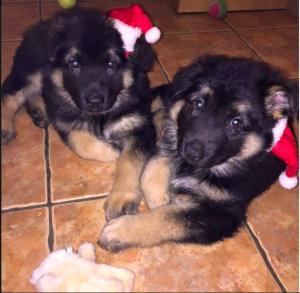
Double trouble ~ 7 weeks old
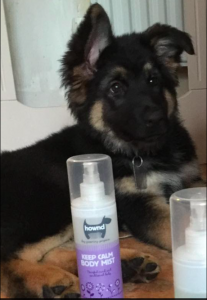
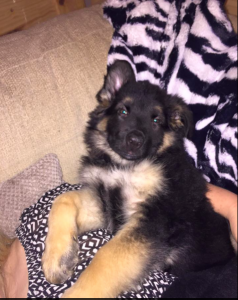

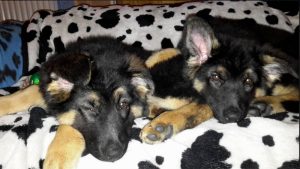
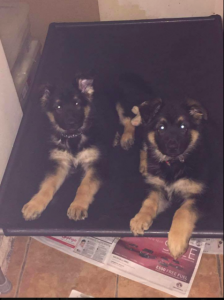
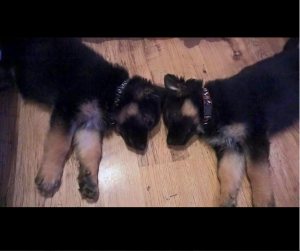
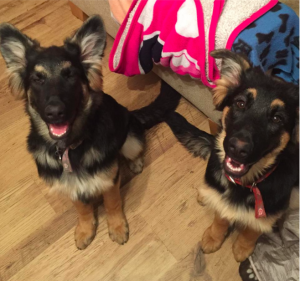
6 Months 31/04/2016
"Every dog has its day!"

Double trouble ~ 7 weeks old







6 Months 31/04/2016
DANDER
The problem is not with the pet’s hair. It is the dander, or microscopic scales of dead skin (similar to, but much smaller than the dandruff on the human scalp) which pets are constantly shedding that is the cause. They are so tiny that you seldom, if ever, know that they are circulating in the air or laying on the furniture and carpets. Regular grooming ( bathing ) and brushing of the dogs coat can help )
When does your dog need to be vaccinated?
At 6-8 weeks of age puppies should receive their first vaccination; this is temporary and needs to be followed up with a 2nd to vacinate against the following:
Canine Distemper.
Hepatitis.
Parvovirus.
Leptospirosis.
Once your puppy has completed their course of vaccinations (4 weeks apart ) as they need to be a minimum of 10 weeks of age ( time intervals may vary according to your vet )This would mean that puppies wouldn’t be able to start going out until a week after the second dose for your new puppy to then be able to explore the world : )
SOCIALISATION…
What Is Socialisation?
Socialisation for a new puppy is paromount to the welfare of your puppy and it starts ( as soon ) as they’re born ( which is why I do not support puppy mills as they’re just for profit! and many are notorious for their filthy, overcrowded conditions confined to CAGE where they can’t stand or lay down properly or have been taken away from their mummy as young as 3 weeks of age and as a result produce unhealthy, unsocialised puppies!
Ok, well socialisation starts with the environment into which the puppies are born – this starts between (3 – 12 weeks of age) so you can see how important this is to the pup as mother nature is smart right? as you don’t want your new little puppy jumping out of it’s skin when it see’s a leaf blowing in the wind? or suddenly runs for it’s life when it hears the sound of a hoover? The first 3 – 12 weeks in a puppys life is detrimental to how your puppy will adjust to every day life as by 18 weeks it’s then set in stone to your pups journey in later life and nobody wants a frightened uncomfortable pup right? which will be (your fault as the owner when you have a pup that is frighened of it’s own shadow! )
So, therefore you want your new puppy to be accepting of any new experience right? Such as the honking of a car horn, buses that HISS!!! the washing machine which sounds like it’s going to orbit space! : ) as you don’t want your new puppy forever chasing cats & bicycles!!! Although it is impossible to introduce your new pup to every eventuality! We can at least minimise the stress in which it may bring for the poor little pup right? it’s just paramount to introduce your new puppy to all types of people, nosies, children, other dogs, new sights, sounds, strangers, ( postman ) and last but no way least your feather duster!!! : )
BUYING A PUPPY – THE RIGHT BREED FOR YOU AND YOUR FAMILY ?
Puppies need exercise, training, play and company. However different puppies need different amounts. If commitments is a probem in your house a more active breed may not be suitable for you and some breeds suffer form anxiety and sometimes find it hard being away and separated from their owners even for an hour! So, you will also need to consider this too. How much time do you or can you can spend grooming? and consider the added expense for the more long-haired puppies. Mind you, this said most people these days now take their dogs along to the ‘groomers . Can you afford this every 4/6 weeks? ( or, if you’re house proud , you should maybe consider a non moulting breed : ) .
NEW PUPPYS DIET SHEET
8 – 12 WEEKS 6 – 7am Weetibix Goats milk – 11am Dry/Wet/Raw – Food – 4pm Dry/wet/Raw – Food – 7pm > Raw egg goats milk ( Cows milk is fine however goats milk is closer to mothers milk ) and a few 0nces of raw mince/tripe or chicken depending on weight and your breed of puppy.
12 – WEEKS + > 7am Dry/Wet/Raw > 11am Dry/Wet/Raw – 6 – 7pm > Raw egg goats milk and a few 0nces of raw mince/tripe or chicken depending on your breed and weight of puppy.
4 MONTHS + > 7am Dry/Wet/Raw > 6 – 7pm > Dry/Wet or Raw feed egg goats milk and a few 0nces of raw mince/tripe,chicken depending on weight and your breed of puppy.
6 MONTHS + > One meal a day, small breeds feed twice daily as they only have small tums and also for giant breeds as they shouldn’t have large meals and should be fed in raised feeders to aid the prevention of the possible onset of bloat . Dogs should not be exercised for at least 20 mins after eating for the same reason, it is also a myth that only large and deep chested dogs can suffer from the onset of such a life threatening illness as bloat.
WHAT TYPE OF FOOD WET, DRY OR RAW?
RAW – Ok, well, again this is an personal preference, lots of people are raving about feeding their NEW puppy ‘raw by eliminating all preservatives, Colourings, Flavorings, Gelling & thickening agents, added sugars, meat derivatives and are gluten & grain FREE!
CONS: Expensive, smelly and you will need plenty or space in your freezer!
PRO’S: They give your new puppy all the minerals and vitimins that they need.
OUR QUALITY?
Our nature range is Dfra and veterinary approved, our award winning range of naturally nourishing complete and balanced raw meals are made with ethically sourced human grade meat and wholesome ingredients and come with the higest welfare standards and traceability.
Raw Feeding Your Puppy
Whether you have decided to raw feed your puppy, or are just researching your options, this page explains the benefits of raw feeding and how to get started.
In this section we have tried to include all the information you will need on feeding your puppy a raw diet. If there is anything we haven’t covered you can contact us with any questions through Facebook, Twitter, or by email.
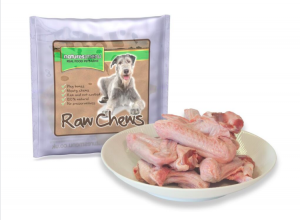
Getting Started with Raw Feeding
Raw feeding provides a completely natural, preservative free alternative to many of the dry and processed pet foods available, and what better time to start than puppyhood.
Your pet’s body is designed and has evolved to digest raw foods and high quality proteins rather than processed cooked proteins and starchy or sugary grains like wheat or white rice, commonly found in dry or kibble based dog foods.
Natures Menu provide a range of puppy foods which are high in real meat protein and natural essential oils to help the growth and development of your new puppy. Just like our adult ranges, our Puppy foods are made using the finest ingredients and are completely balanced with all the nutrients your puppy will need in the important first few months of their lives.
It is safe to start feeding our puppraw nuggets from 6 weeks of age. From 3 -6 weeks (alongside mother’s milk) you can gently cook some raw puppy food either on a tray in the oven or in a pan on the hob (do not microwave it) then blending it with a little water into a slurry.
Puppies will need to be fed up to six times daily. The volume they will need will depend on their size, but we recommend from 6-8 weeks they will need around 10% of their bodyweight in food per day, then 8% at 8 weeks, and 6% at 24 weeks.
What to do if your puppy is used to dry food
If you are going to be transitioning your puppy from dry or non-raw food to raw we advise that you do this over seven days, dividing their daily food ration into 50% raw and 50% dry, fed separately in alternating meals. From day 8, you can make the switch to 100% raw.
Are bones and chewing meats suitable for puppies?
Chewing provides a great energy release for a young dog and it also releases natural chemical endorphins into the brain which encourage a relaxed, happy dog. Chewing also allows them to use their teeth as nature intended: the small teeth right at the front are called incisors which are used for nibbling small pieces of meat from bone.
The canines which are the four large pointed teeth (two at the top and two at the bottom) are used for gripping and tearing meat and the large flat teeth along the back are used for crushing and grinding. Massaging of the gums is also accomplished by correct chewing and all together, these will help maintain a healthy mouth and develop strong, clean, adult teeth.
Puppies can be offered bones from as young as 10 weeks old and Natures Menu recommend monitoring your puppy at all times with bones, chews and soft toys. Start with a duck wings and hold the tip, gently encouraging your pup to lick, chew and suck at the bone. This will help to teach them patience and how to approach bones into adult hood. Do this for the first few weeks of feeding bones and start to mix in some turkey necks, duck wings, and meaty beef chews to help provide a variety of textures and tastes for your young dog.
***We would not recommend*** giving a puppy knuckle bones or marrow bones until their adult teeth are fully developed, as these can be too tough for puppy mouths.
Chewing is immensely satisfying, mentally stimulating and incredibly healthy for all dogs. Providing appropriate toys and chews will help your puppy grow into a healthy, stable dog. ***Please remember*** that it is NEVER appropriate to feed any type of cooked bone to a dog.
HOUSE BREAKING YOUR NEW PUPPY
I dont agree with puppy pads or newspaper the only way to house break a puppy 100% successfully in my personal opinion is whether regardless of if it is 2am 4 am in the morning when your half – asleep ‘when your puppy cries you need to get up like you did with your new born baby ! and pick them up and take them outside and tell them in my case ( “QUICKLY”. ) when your puppy does its business prasie them take them back to their sleeping place and repeat – until your puppy is house trained, they only have small bladders and can pee on average once every hour! and it really does work!!! It is hard work and time consuming but it really will pay off in the long term.
SHOULD I USE CAGES/CRATES
Some people do not like to crate their puppys at all and some do, this is an individual thing for you to decide, if it works for you then fab! crate them. I’ve read lots of books that say they can be an excellent way to house break your puppy as they don’t like soiling their own sleeping areas – They’re also a fab way of keeping your puppy safe ( and your furniture ) they can’t chew wires or the chair leg : ) etc whilst your out or left out of sight. It can also give them quite time to sleep as you may have young children that keep bothering them . Children should always be supervised with your new puppy.
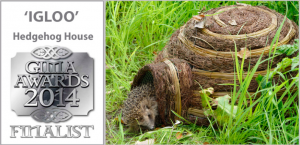
Across the UK wildlife trusts are working hard to restore habitat to benefit species such as our hedgehogs and how we can keep them in our own back gardens.
Frogs are sadly declining at an alarming rate as a diret result from pollution. I was very sad indeed to stumble across a local pond recenlty which was fillled with dead frogs to which my 3 year old daughter was extremely distressed and to which has promoted this current up – date. My daughter has only ever seen tadpoles in a small tank at school which is fab for her awareness and education – however it’s not an ideal way to experience wildlife is it ? to keep them this way can sadly simply kill them.
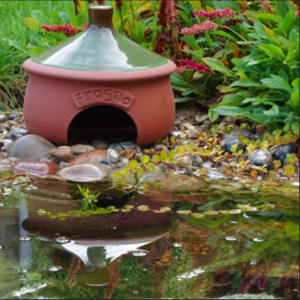
If whilst reading this post and have young children or maybe you simply love wildlife like myself then why not bring the frogs to your own garden by installing your very own pond? I would recommend a mimium depth of 2 – 3 ft ( which then aids prevention of freezing) if freezing does occur then simply use hot water on the ice preventing hibernating frogs from suffocation – Also don’t forget to create safe havens for you new garden friends such as placing a frogilo house down, as this will keep the frogs & toads more secluded away from predators such as cats & foxes, my daughter really enjoys visiting her new garden friends.
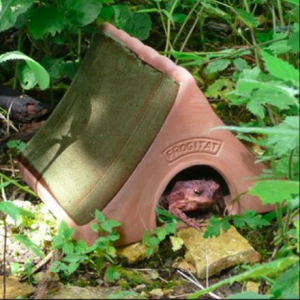
You may like myself find amphibians fascinating, or you may not – However! you may be pleasantly surprised to learn that they’re also a fanstastic way to keeping slugs & snails at bay ~ the organic way – as frogs & toads very much love to feed on (these garden pests) so, no more slug pellets, keeping your garden that perfect safe haven ( pesticide free )
Our new kitten is 10 week’s old. ( DOB : 26/02/2015 ) We’ve named her Millie – May. She is booked in to the vets for her first injection, microchip, deflea treatment & worming. She has settled in very well and she is very friendly, playful and confident . She came with 4 week pet plan insurance and is eating, drinking and using her litter tray. ( well, I hope she is : ) )
Millie – May is now 8 months old and she is no longer using her litter tray indoors hooray! : ) she has grown so much , she is the most placid cat she even lets my 4 year old daughter pick her up like a handbag! She has also learnt to knock on the front door letter box to come in the house : )
THE RISKS OF RAPID EATING
These days, most dog owners will be aware of the Sadly, all-to-common word ‘Bloat, for those that haven’t heard of bloat it can kill your much loved dog. Gastric dilatation-volvulus (GDV) more commonly known as bloat happens when the stomach rapidly blows up like a ballon if vetinary advice and treatment is not acted upon with a matter of urgency the dogs stomach fills with air and begins to start to twist, which then twists and twists inside the dogs stomach trapping all the gas and eventually cutting off all circulation resulting in most cases death as the dog quickly goes in to shock and dies. These slow feeders can help reduce your dog or cat from gulping and eating causing excessive amounts or fluid, often dog owners think that bloat only happens to deep chested dogs or giant breeds, this sadly is just a myth.
https://www.youtube.com/watch?v=bf6mSKMX-AQ
Dog Rocks stop pet urine ruining your lawn & scrubs.
How do they work you ask?
They’re added straight into your pets water bowl. They’re 100% natural safe & proven and a hassle free prevention to cure grass burn patches!
Dog rocks were discovered in Australia by an aboriginal gardener in the 1990’s.
Autumn & Winter Feeding:
At this time of year birds benefit from being fed a high energy ( High Fat Diet)
In these coldest winter climates birds benefit immensely from being fed a diet of high fat food which can help even the smallest of birds in helping them to generate extra body heat, so its vital to feed birds such a diet high in calories and high in fat such as suet and fatballs.
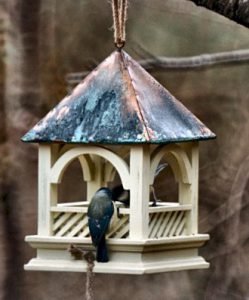
Spring & Summer Feeding:
During the warmer climate birds require protein foods such as black sunflower seeds, mealworms, waxworks, Nyjer seed and peanuts. (Peanuts should be fed from metal feeders preventing the chicks to choke).
It is known that birds chose this time of year to breed and feed their chicks as the availability of insects is more vast such as earthworms & caterpillars, however, in the colder, wet rainier days insects are not so readily availible and when the weather is extremely dry the earthworms will not be readily availible causing a shortage of supply for the birds and their young chicks which is why its so important to only place feed which is appropriate to feeding the chicks or they will choke and will be fatal doing more harm than good. ~ ( RSPB)